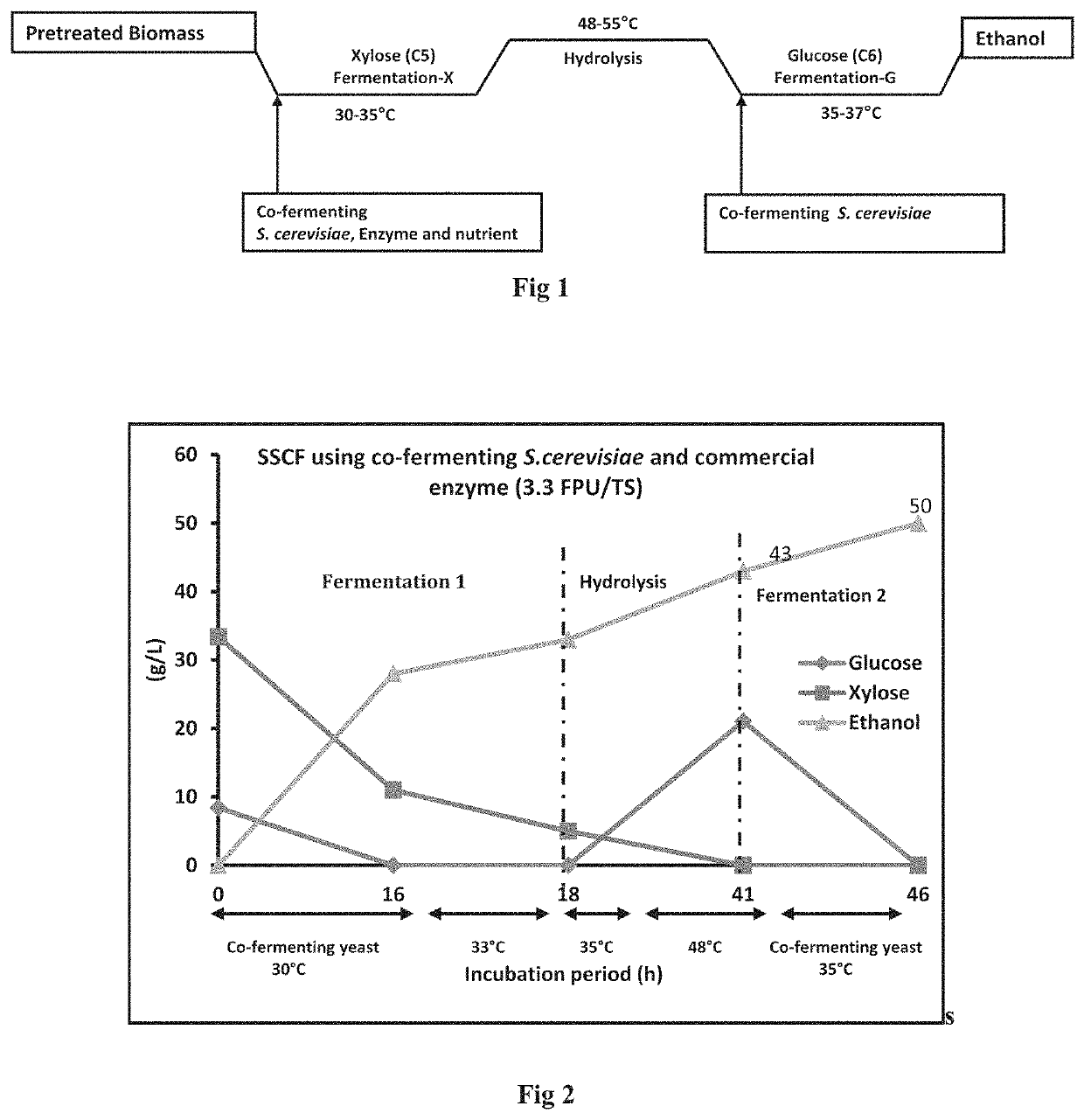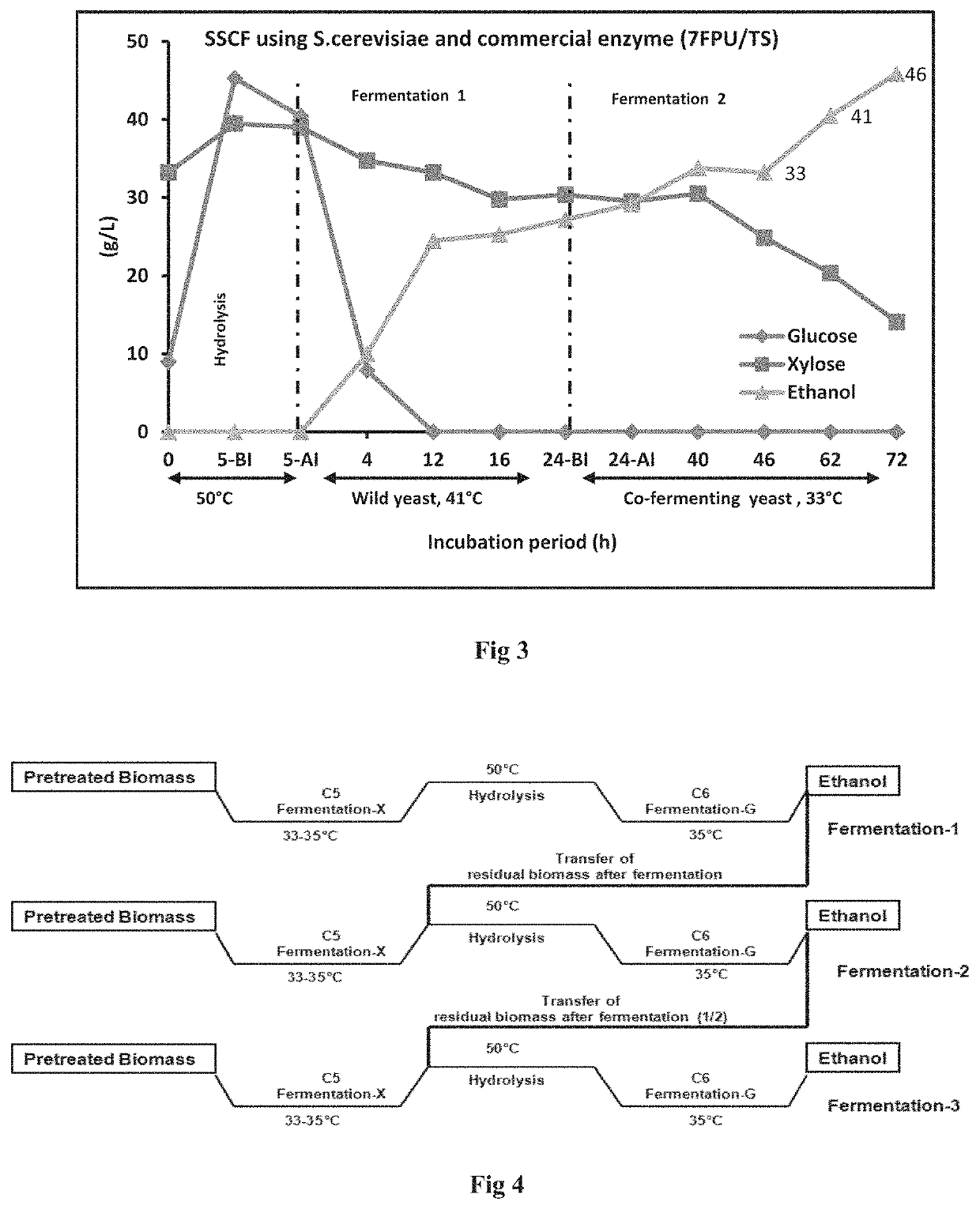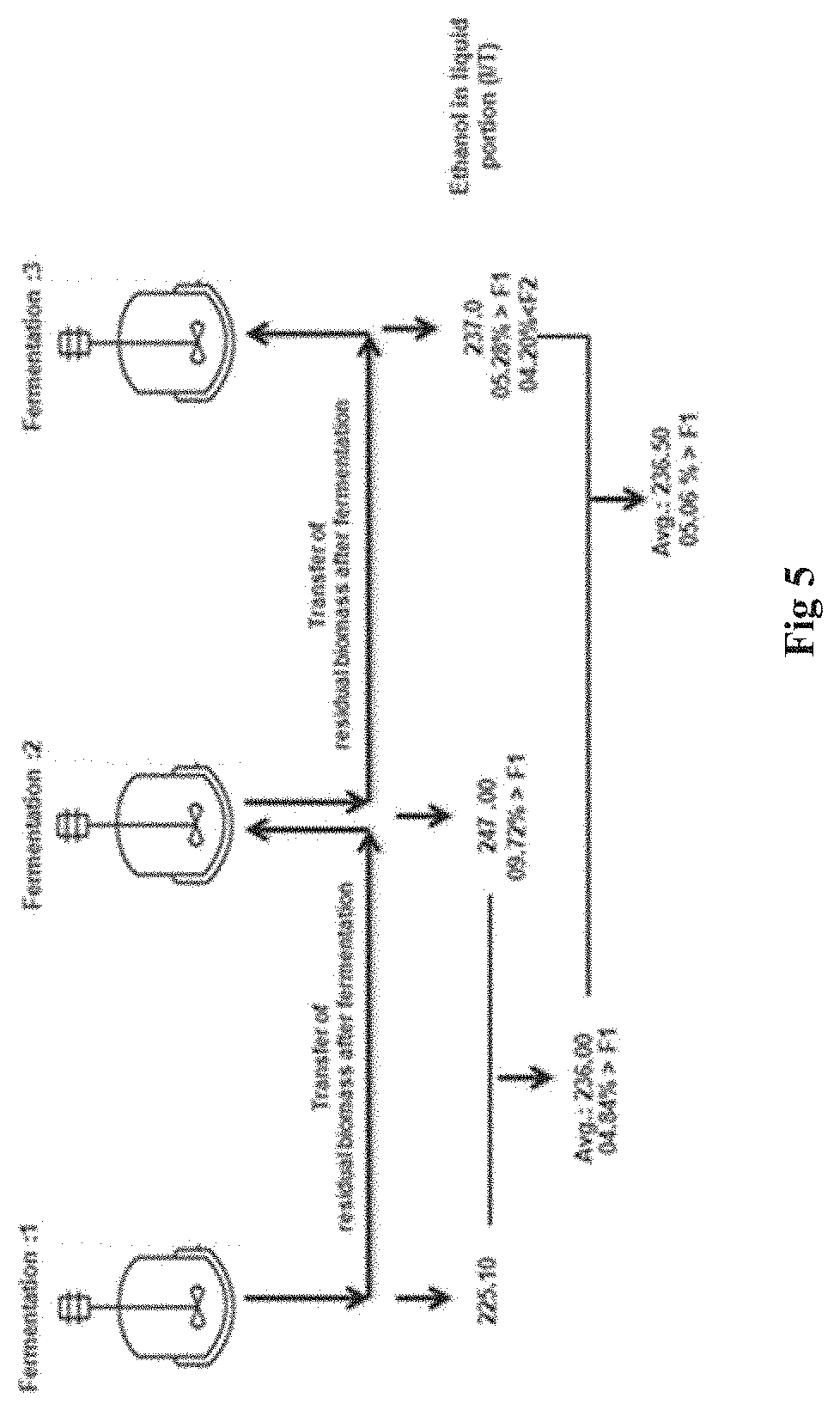Sscf process for second generation ethanol production from lignocellulosic biomass and 2g residual biomass
a technology of lignocellulosic biomass and ethanol production, which is applied in the direction of biofuels, fermentation, etc., can solve the problems of reducing the overall reaction time and reactor volume of ssf/sscf, requiring a bit longer hydrolysis time, and easy inhibition of enzymes during hydrolysis, so as to enhance the overall ethanol yield
- Summary
- Abstract
- Description
- Claims
- Application Information
AI Technical Summary
Benefits of technology
Problems solved by technology
Method used
Image
Examples
example 1
[0078]Process for Production of Ethanol from a Lignocellulosic Biomass Having a Single Batch of SSCF:
[0079]Pretreated biomass (slurry, TS approximately 24%) without any detoxification is introduced directly to the fermenter. The pH of the slurry was adjusted to 5.5 with aqueous ammonium solution (25% initial concentration). The pH adjusted slurry was fortified with 3 g / l MgSO4, cellulase enzyme (Commercial enzyme, 3.3 FPU / gTS) and co-fermenting Saccharomyces cerevisiae (1 g dry cell biomass / liter, xylose and glucose utilizing yeast). Required amount of water was added to the process to adjust the final biomass concentration to 20%. The whole process was incubated at 30° C. for 16 h for the SSCF with 200 rpm. When the free xylose concentration in the slurry comes near to 6-7 g / l , the temperature of the process was increased to 33° C. and 35° C., incubated for 2 h in each temperature for better hydrolysis and SSCF. After that temperature increased to 48° C. This step mainly required ...
example 2
[0080]Conventional SSCF Process for Ethanol Production:
[0081]Using conventional SSCF approach of ethanol production from pretreated biomass, saccharification at 50° C. for 5 h and followed by fermentation and hydrolysis at 41° C. by a moderately thermo tolerant wild yeast S. cerevisiae up to 24 h. After this fermentation another yeast co-fermenting S. cerevisiae was inoculated to the SSCF process. In this approach the xylose utilization after the glucose SSCF was comparatively slow as compare to the above process and about 10 g / l residual xylose was observed after 72 h. This process of fermentation brings the lower ethanol titer after the 72 h of fermentation using even higher enzyme dosage. The results of this experiment are represented by FIG. 3.
Solid Loading in SSCF20%Mode of SSCFSSCF, 1st wild typeSaccharomycescerevisiae (1 g / l),2nd co-fermentingSaccharomycescerevisiae (1 g / l)Enzyme loading (FPU / g) and Sources7, Commercial enzymeResidual Xylose (g / L)9.98Ethanol Concentration (g / ...
example 3
[0082]Process for the Ethanol Production By Transferring / Re-Circulating the Residual Biomass After First SSCF to Up to Three Conjugative Batch of SSCF Process:
[0083]Present invention reveals a novel process of SSCF which achieves 2.8 to 3% ethanol titer from 15% dilute acid pretreated rice straw within 48 h of SSCF. The significant of the process is that after pretreatment the pretreated biomass (slurry, TS approximately 20%) without any detoxification comes directly to the fermentor. The pH of the slurry was adjusted to 5-5.5 with aqueous ammonium solution (25% initial concentration). The pH adjusted slurry was fortified with MgSO4 (0.5%), cellulase enzyme (commercial enzyme, 2.3 FPU / gTS) and engineered co-fermenting Saccharomyces cerevisiae (1 g dry cell biomass / 100 gTS, xylose utilizing genetically modified yeast). Required amount of water was added to the process to maintain the final biomass concentration to 15%. The whole process was incubated at 33° C. for 18 h for the fermen...
PUM
| Property | Measurement | Unit |
|---|---|---|
| temperature | aaaaa | aaaaa |
| temperature | aaaaa | aaaaa |
| temperature | aaaaa | aaaaa |
Abstract
Description
Claims
Application Information
 Login to View More
Login to View More - R&D
- Intellectual Property
- Life Sciences
- Materials
- Tech Scout
- Unparalleled Data Quality
- Higher Quality Content
- 60% Fewer Hallucinations
Browse by: Latest US Patents, China's latest patents, Technical Efficacy Thesaurus, Application Domain, Technology Topic, Popular Technical Reports.
© 2025 PatSnap. All rights reserved.Legal|Privacy policy|Modern Slavery Act Transparency Statement|Sitemap|About US| Contact US: help@patsnap.com



